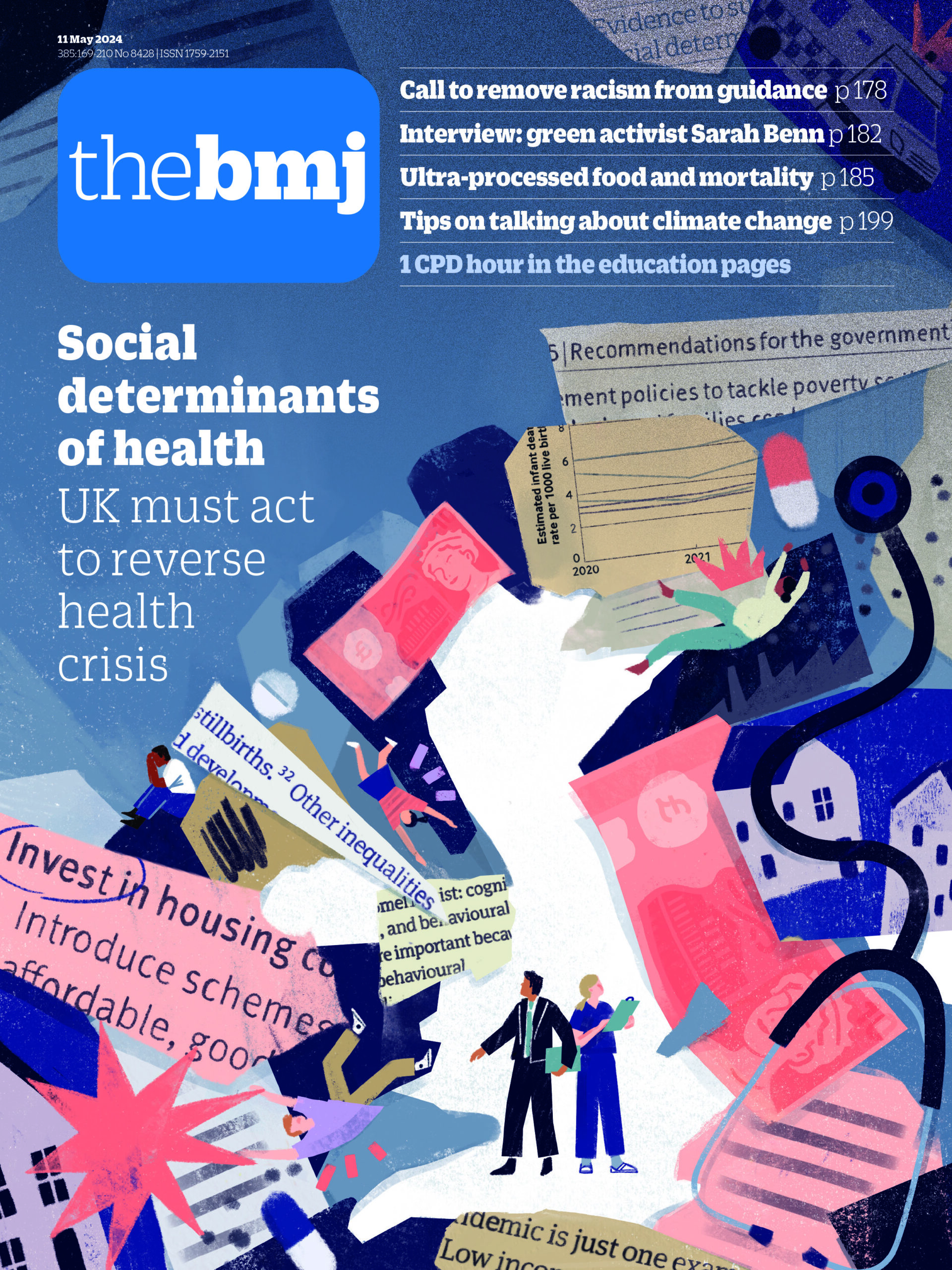There is only limited evidence that the current approach to continuous observation of patients at risk of harming themselves when on hospital wards is effective, an investigation has concluded.1
The report from the Health Services Safety Investigations Body (HSSIB) said that sometimes healthcare providers get false reassurance from a patient being on continuous observation, believing that this eliminates the risk of self harm, whereas at best it can only allow staff to quickly call for help. In addition, many patients find the practice intrusive, and it can even increase the risk of self-harm in some cases.
Continuous observation involves one or more members of staff continuously watching a patient to reduce their risk of self-harm. Guidance from the UK National Institute for Health and Care Excellence says that it should be seen as an “opportunity for active engagement as well as sensitive supervision.”
However, the HSSIB’s report said there was wide variation across hospital settings as to why, when, how, and by whom continuous observation was carried out and that patients’ experiences were not consistent. The HSSIB, which investigates patient safety concerns in England, is calling for better national guidance on when and how continuous observation should be carried out, with greater emphasis on the “therapeutic element” of interactions with staff rather than the “custodial element.”
The report investigated a reference event involving a patient called Emily-May, who had been cared for in a mental health hospital where she was detained under the Mental Health Act. She was taken to an acute care hospital after self-harming to have surgery to repair her wounds. She then was moved to a high dependency unit within the acute care hospital, where she again self-harmed while two members of staff were continuously observing her.
The investigation indicated that the staff at the acute care hospital understood their role to have been to “watch” Emily-May for attempts to harm herself, and there was little evidence of therapeutic engagement. Emily-May told the investigation that she particularly did not like being observed by staff who did not speak fluent English or did not interact with her. She felt as though she was being watched by strangers and wanted people to talk to her as “a human.”
The HSSIB then carried out a wider investigation into continuous observation. A systematic review of patients’ experiences found that patients were more likely to report a positive experience when the staff interacted with them, such as by showing care and concern. Patients who had been continuously observed often reported feelings of distress, anxiety, and isolation and said that they felt restricted or had little or no privacy.
Staff and subject matter advisers consulted for the report said that continuous observation was a skilled activity but that in practice it was often given to healthcare support workers who may lack the experience and knowledge to support vulnerable and distressed patients. Another problem was that acute care hospital wards were often busy, brightly lit, and noisy environments that were often unhelpful for people with mental health problems.
The report also highlighted the difficulties of carrying out continuous observation in poor light or when staff were tired. Whereas in mental health wards staff carrying out continuous observation would change every 1-2 hours and there would be a wider team available for support, in an acute care ward one staff member may be carrying out an observation over a 12 hour shift.
Another issue raised by the report was that witnessing an event of significant self-harm can be traumatic for staff members caring for a patient, and they can’t always get the support that they need.
Senior safety investigator Clare Crowley said, “Continuous observation is one part of a person’s overall mental health plan, but if the approach is not appropriate or is not done safely or effectively there is a real risk that patients could harm themselves during their hospital stay. This is distressing and traumatic for all involved.”
She added, “During our investigation, we saw that there is no clear system of support and guidance at a national level for healthcare providers and their staff when it comes to continuous observation. We have emphasised that there is limited evidence that the intervention is effective—with many experts, patients, staff, and researchers questioning its use. The inconsistency and variation in understanding of the purpose of continuous observation and how best to do it means that often the therapeutic element of the interactions can be lost. As we were told, this, rather than the ‘custodial element’ of observation, is crucial to keeping the patient safe and is more likely to reduce the risk of self-harm.”
NHS England was approached for a comment but had not replied by the time of publication.










